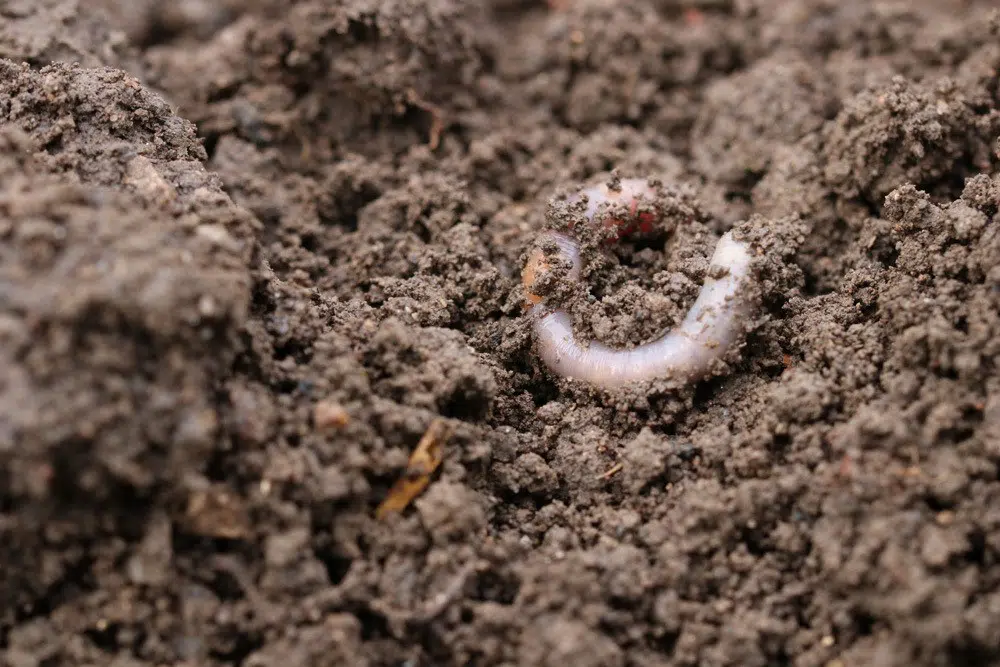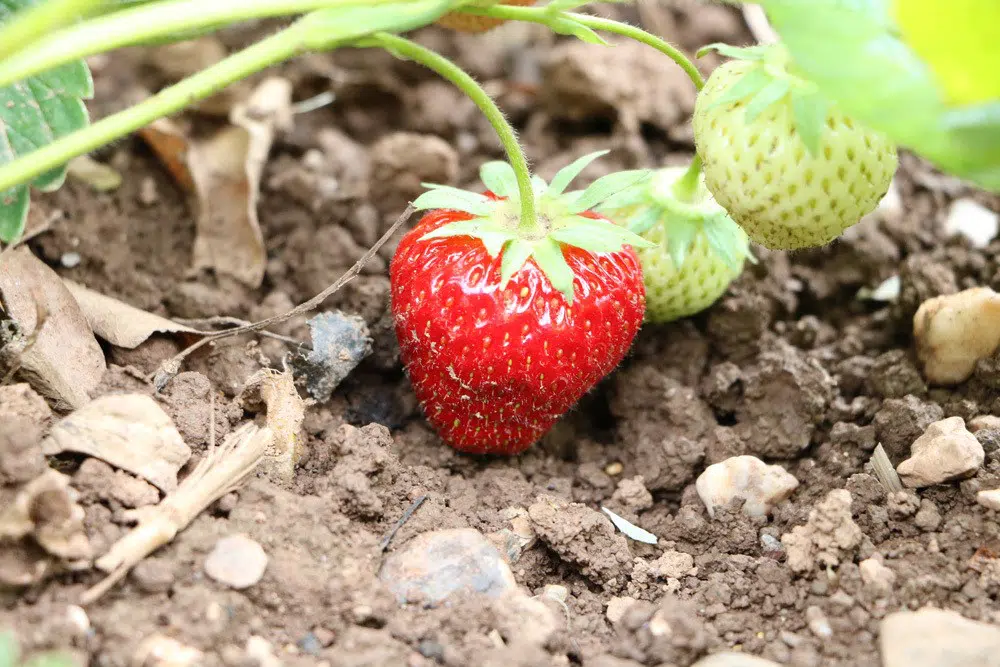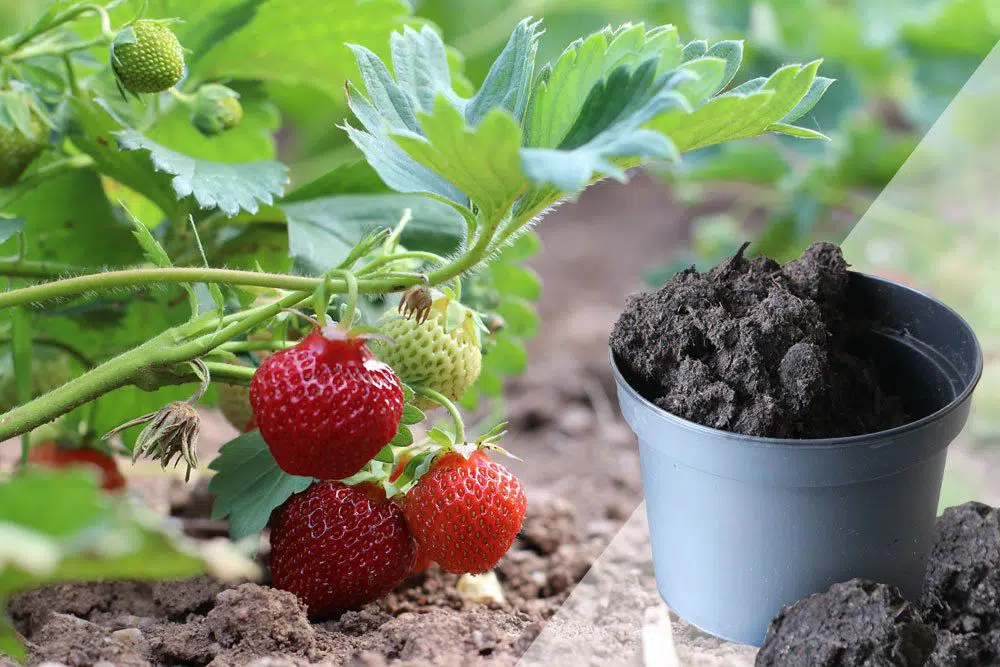Strawberry jam, strawberry ice cream, strawberry cake or snacked on raw – strawberries simply taste good. However, they taste best when they come from your own garden. But strawberry plants also thrive in tubs or balcony boxes. And the joy is all the greater when the harvest is plentiful. Therefore, in addition to the right location, you should provide the strawberry plants with an optimal substrate.
Contents
Strawberries in the bed
In order for strawberries to thrive in the bed, you should choose the right location and soil for the plants. In the best case, the soil is as follows.
- loose
- not too heavy
- deep
- rich in humus
- pH value: 5.5 to 6.5 (slightly acidic to acidic)
- sandy-loamy

In addition, the soil should not allow waterlogging. If the soil is heavily compacted, it should be loosened with sand or leaf compost before planting garden strawberries. Green manuring with lupines or incarnate clover is also a good preparation for the plants.
Tip: Conventional garden compost is not suitable for strawberry plants because it contains too much lime and salt.
Soil preparation
Before the strawberry plants enter the bed in July, the soil should be prepared. It is best to start doing this a few weeks before planting, as strawberry plants should not be planted in freshly worked soil. To do this, proceed as follows.
Dig the soil deeply
work in four to five liters of humus or leaf compost per square meter
shallowly work in 30 grams of horn meal per square meter
After about two weeks, the garden bed has settled so that it can now be raked smooth and the young plants can be inserted. Straw spread between the plants not only reduces the growth of weeds, but also protects the garden strawberries from moisture and gray mold.

Tip: monthly and climbing strawberries are planted already in the spring.
After harvest
To ensure that the plants again bear a lot of fruit next year, you should already prepare the soil and plants for the coming year after harvest. To do this, clear the straw aside and cut off leaves and remove all the childels.
Tip: Depending on the need, the childels can be used for propagation.
To protect the plants from fungal infection, remove the old foliage from the bed. The now compacted soil is then loosened. Then sprinkle organic berry fertilizer around each plant and mulch the soil with leaf compost. This will give the plants enough nutrients to start new flower buds in the fall.
As a rule, the strawberry crop is most productive in the second or third year after planting. In the following years, the crop yield decreases significantly. Therefore, after the third harvest, you should replace the old plants with new young plants. In order for the new plants to bear fruit abundantly, they should also be placed in another bed. The old garden bed should be replanted with garden strawberries only after four years. Plants with a short cultivation period are suitable as so-called previous crops, such as.
- Kohlrabi
- Radish
- Lettuces
Strawberries as tub plants
If you don’t have a garden or don’t want to plant a strawberry bed, you still don’t have to do without fresh strawberries, as (potted) strawberries also grow very well in tubs or balcony boxes if, as with garden strawberries, the location and substrate are right.
Potted strawberries should ideally be grown in a structurally stable compost-based container plant soil. As with garden strawberries, the substrate should be nutritious and slightly acidic. To reduce the risk of waterlogging, the soil should be loosened with perlite or sand. Since potting strawberries also do not like freshly worked soil, the planter should also in this case be filled with soil a few weeks before planting, so that it can settle. Fertilize potting strawberries, like their garden counterparts, after harvest.
Tip: A planter with drainage holes additionally helps against waterlogging.
To keep the soil warm and moist, mulch the potted strawberries with leaves, straw or bark mulch. This will reduce water evaporation and at the same time protect the plants from rotting. Ideally, the layer of bark mulch is two to three centimeters high.
Since space is limited for plants in containers, special attention should be paid to plant spacing when planting strawberries in a balcony box or planter. Optimal spacing is between 20 and 30 centimeters. If only one plant is placed in the tub, it should have a diameter of at least 20 centimeters.
Wintering strawberries in the pot
As with garden strawberries, there are hardy varieties of potted strawberries. In order for the plants to get through the cold season well, all leaves must also be cut off from potted strawberries after the last harvest. In addition, you should also remove all the leaves and parts of the plant that lie on the soil. It is best to place the potted strawberries on a protected wall of the house in winter. In extremely low temperatures, the plants should also be covered.
Special soil for strawberries
Strawberry plants make few demands on the soil. It is important that the soil is loose and rich in nutrients. This also applies to potted strawberries. Whether the strawberry crop is larger with a special soil, such as strawberry or berry soil, is hotly debated. In favor of a berry soil, which can also be used for the garden bed, is that it improves the soil and serves as an organic fertilizer.


